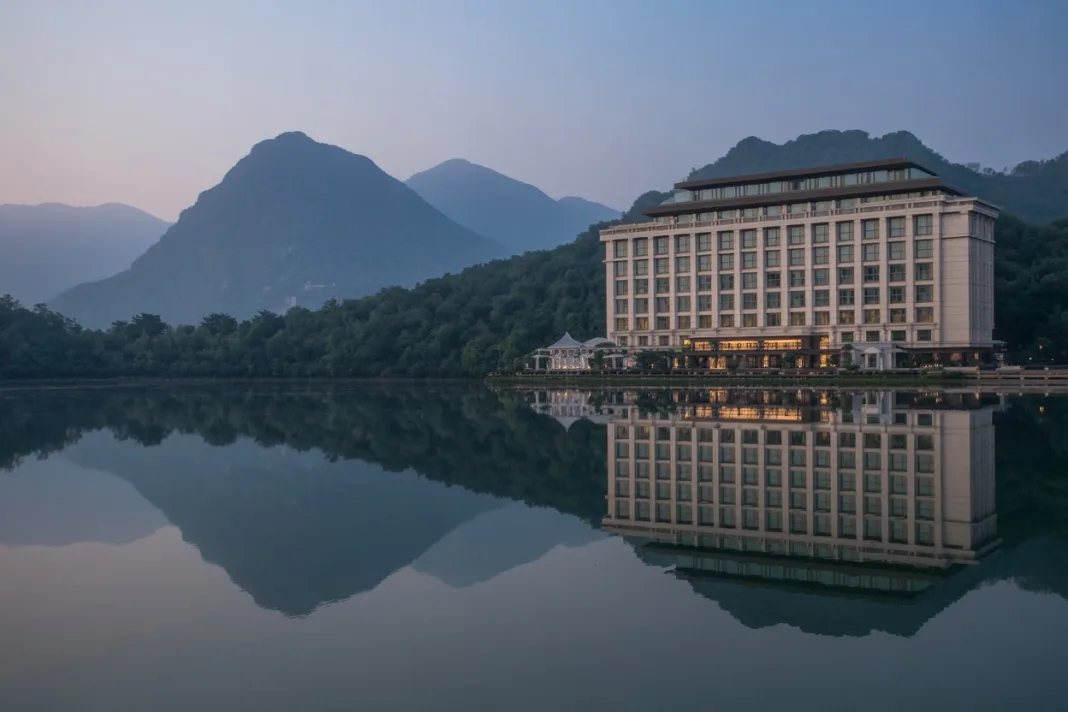Published on
November 19, 2025

When global travellers wake up and plan their next journey, the horizon often shifts as companies and destinations realign. For the hospitality giant Hilton, that shift is clearly visible across three major travel territories: China, Japan and India. The company has quietly re-balanced its Asia Pacific playbook, and the ripple effects are already being seen in destinations and in travel behaviour.
In its latest growth release, Hilton noted the Asia Pacific region remains a core engine of its global development strategy. In showing the new priorities, India is now being elevated as a major growth zone, while China continues to offer scale but with increasing complexity; Japan, meanwhile, is being positioned as an immediate performance driver.
Japan: Strong Market Performance and Travel Appeal
Hilton’s own press materials show that Japan has become one of the fastest-growing markets in Asia Pacific for the company, with luxury openings, corporate travel resurgence and inbound tourism all aligning. According to Hilton’s Asia Pacific “Growth & Development” announcements, new luxury and lifestyle properties in Japan are scheduled over the coming years.
For the travel-enthusiast, Japan’s appeal is clear: vibrant cities filled with cultural depth, seamless hospitality infrastructure and a readiness for tourist growth. In such an environment, Hilton is effectively doubling-down by increasing its pipeline of luxury brands and lifestyle hotels.
India: The New Growth Frontier in Travel
Meanwhile, India is emerging as the long-term travel destination that Hilton is banking on. A Hilton press release confirmed the chain signed a strategic licensing agreement to open 75 Hampton by Hilton hotels in India, targeting states such as Gujarat, Rajasthan, Punjab and Bihar.
Industry observers report that India’s domestic tourism boom, rising middle-class travel demand and infrastructure investment make it one of the most promising hospitality markets globally. A Reuters piece from late 2024 also pointed out Hilton’s intention to significantly expand its India footprint amid leisure-travel acceleration.
For travellers, India now stands out not just for its cultural and spiritual tourism staples, but for the sheer scale of upcoming hotel choices. Hilton’s future-facing plan underscores that India’s travel narrative is shifting from niche to mainstream.
China: Scale and Complexity in the Travel Ecosystem
China remains a strategic region for Hilton, thanks to its immense scale and production of new hotel properties. Yet, the company appears to be adopting a more nuanced approach. As past growth phases focused heavily on China, Hilton is now balancing between maintaining scale in that market and shifting incremental resources elsewhere. According to Hilton’s luxury and lifestyle growth announcement, China continues to feature prominently in the pipeline across such brands.
For inbound-travel destinations and global travellers, China still offers major opportunities—but also more competition, regulatory complexity and shifting consumer behaviour. That means hotel brands like Hilton are adapting their execution in China, while still treating it as a core market.
How This Shift Affects Travel Destinations
From a travel-industry perspective, Hilton’s strategic repositioning carries tangible implications:
- Destinations like Tokyo, Osaka, Bengaluru, Delhi, Shanghai and Chengdu may see increased hotel development, improved travel infrastructure and enhanced hospitality ecosystems.
- Travel planners should expect more mid-scale and lifestyle-hotel options in India, giving more flexibility for both leisure and business trips in once-under-served regions.
- In China, travellers may observe upgrades in higher-end hotels and refined service packages, as competition and consumer expectations mature.
- The interplay between these three major destinations hints at evolving tourist flows: more business travel to Japan, budget and midscale travel to India, and premium/luxury experiences in China.
The Travel-Industry Ripple Effects
The hospitality industry gains from these changes: property owners, franchisees and investors are aligning with Hilton’s priorities; suppliers and travel-trade partners are adapting workflow; destinations themselves are preparing for increased travel demand. For travellers, this means more options and possibly more promotional offers—but also the need to select accommodation and destinations with an eye on the provider’s expansion health.
In India especially, as new hotels open, travellers may secure better value, earlier access and novel experiences. Japan continues to benefit from its mature travel ecosystem. China, meanwhile, may offer fewer “new entrant” surprises but greater scale and brand familiarity.
A Human Outlook: Travel, Growth and What Lies Ahead
When individuals and families plan trips—whether a business conference in Tokyo or a leisurely tour of Rajasthan’s fort-cities—they’re driven by more than room counts and brand logos. They seek places that feel fresh but safe, vibrant but reliable. Hilton’s adjustment in Asia Pacific signals an underlying confidence in travel’s future: that people will move again, that destinations will develop and that hospitality will evolve to meet those demands.
For travellers, this means being part of an era where India is rising, Japan is strong and China remains a pillar. The choices ahead are richer than ever.
As Hilton moves forward with its re-imagined Asia Pacific strategy, the travel world watches with interest. The change isn’t just about hotels—it’s about destinations, experiences and how we will move, explore and stay in the years ahead.






